Yachting World
- Digital Edition


How Comanche took more than a day off the transatlantic record
- Elaine Bunting
- November 15, 2016
The supermaxi Comanche broke the transatlantic record for monohulls (west to east) in July 2016, taking more than a day off the record. Here's how

No sailing record has a more storied history, or is harder to beat, than the transatlantic record. At a time when sailing records are being divided into smaller currencies and made with greater frequency, this is the big one. Ever since 1905, when Scots skipper Charlie Barr reduced it to 12 days in Wilson Marshall’s 56m/185ft three-masted schooner Atlantic , it has been a grand and famous prize.
On 28 July this year a new high water mark for this famous record was set when the 30.5m/100ft supermaxi Comanche crossed the finish line of the historic course from Ambrose Light, New York to The Lizard Point in Cornwall. She had finished a job for which she was built. The crew completed the 2,880-mile course (sailing 2,946 miles, only 66 miles farther than the Great Circle distance) in 5d 14h 21m and, in doing so, Jim Clark’s super-machine and her all-star crew bettered the previous record by well over a day.
See the full report from July on Yachting World.
The record Comanche broke is notoriously hard. That is why the last incumbent, Mari Cha IV , had hung onto it since 2003. Comanche , unlike the 42m/138ft Briand-designed schooner that preceded her, is an insanely powerful contraption with massive beam at the stern, long reverse sheer, a mast well abaft 50 per cent of the boat length, a towering, narrow mainsail and a long boom overhanging the stern. Comanche was built for raw speed with the wind abaft the beam.
But to break the record, the yacht needed mainly reaching conditions to take her all the way across, riding only one weather system. And it had to be the right kind of low pressure, not too fast and not one that would fizzle or be blocked before it reached Ireland.
“We needed a low pressure that was strong enough to make it all the way to the English Channel,” explains Stan Honey, the team’s navigator. “The question for Comanche was: could we find a system that was slow enough that she could stay in front of it?”
Honey went back to 2004, downloaded historical weather data in GRIB format and ran the boat’s polars starting every six hours from June through November for every year since. “What I found,” he says, “is that there was, on average, only two [suitable] systems per year.”
In June, Comanche returned from the Newport-Bermuda Race. Skipper Ken Read had his pick of 30 of the world’s best sailors, to be on a rolling rota over a three-month period, ready to go at a moment’s notice. Boat captain Casey Smith prepared Comanche . She had always been designed to sail in manual configuration, as world speed sailing records forbid the use of stored power, so the hydraulic pit winch and sail controls could instead be powered by rotary pumps.
One of the things Stan Honey had discovered was: “If you succeeded, it [would be on a weather pattern that] was reaching and running, so we took fewer sails and removed the daggerboards.” Taking the boards out saved 400kg. Upwind sails that would not play a part in record conditions were left ashore.
Twice the weather looked as if it was shaping up right. There were two near-misses when airline tickets were bought and crew were on their way to the airport only to find that the forecasts had changed. But in July a suitable weather window appeared, and continued to improve. This was a low that was travelling slowly by virtue of an old warm front left over and a weak leftover low on the north-west edge of the Azores High.
At the right speed for Comanche , and with a low probability of overtaking her, it could potentially carry her on south-westerlies all the way. It was Code Green.

Her crew headed out from New York late in the evening of 22 July. After all the planning – six long years from concept to this point – Ken Read was not aboard. He had a prior commitment to commentate at the Louis Vuitton America’s Cup World Series Portsmouth. The team decided to go ahead. “It was helpful for us all to know how rare this weather was,” says Stan Honey.
The first few nights at sea were difficult and there were times when the record hung in the balance. First, Comanche had to negotiate a line of thunderstorms. Behind these the wind fell light and they slowed. A hold up of an hour or two may not seem that critical, but it was worrying for the crew because it increased the odds that they might fall off the back of the low pressure system. Typically, this is how records fail: a breakage or some other delay kicks you out the back door.
But past that the boat was, Casey Smith remembers, “ripping along”. They were doing 550-mile days; they were blasting. Though it was mainly grey and overcast, that did not dampen the mood on board. True to the forecast, the sailing was, Smith says, ideal.
There were 17 crew on board, the fewest Comanche had ever raced with. Since conditions were not expected to vary greatly, they weren’t going to be doing many sail changes. Smith remembers doing only five sail changes during the record. “Normally we might do that in a day,” he says.
The only sails used apart from the main were the A3, Comanche’s VMG-style running sail, up “90 per cent of the time” and the FRO, or fractional reaching Code 0.

Comanche’s actual track is in black. The theoretical optimum route from the GFS HO weather analysis is in blue.
Coming on home
At times there was fog, and the radar and AIS watch was intensified. “Fog is always the case with transatlantic records, as you’re doing it in the warm sector,” says Stan Honey. “It’s all grey and every bone in your body tells you you are going to get pasted, but because you are travelling along with it you don’t.”
When the record had its hairy moments, it was because the breeze faded. “Once we cleared out of the top of Newfoundland and through the ice areas that was our lightest period of the race, 15-18 knots,” says Smith. “We had to be very careful. But we were still doing 18-20 knots [of boat speed] and the breeze soon built up.”
But was it rough? Smith just laughs. “Maybe we are going to have to tell people we had 5m seas. No, it was as calm as I’ve seen the Atlantic. We wouldn’t have seen a swell over 2m. Although between the warm and cold front we had lousy visibility, the wonderful thing is that you get flat water and because you are moving with the system seas are just starting to build.” He thinks the maximum wave height was even less. “Never more than 1.5m,” he declares.
“It seemed to be that we were so well lined up on the system that we’d advance to run out of wind down to below 20 knots and then the wind would slowly build up and then run out. That’s how much on the front edge of the system we were. We’d poke out of it and come back in,” says Smith. “ But in flat water and breeze, doing 500+ mile days, we were just coming on home.”

A big, hollow drum
It never got especially cold on board. According to Casey Smith some of the crew did not wear boots at any point on the way across, only deck shoes. But the water temperature dropped to 9°C so perhaps that is merely a measure of their hardiness. Honey laughs that he knows a Kiwi sailor who wore Crocs rounding Cape Horn – and it’s not an indication of fair weather.
On the other hand, the safety routines aboard were stringent. Crew had AIS beacons, strobes, always wore harnesses and tethers, and were clipped on “the whole time. No one comes on deck without a harness or lifejacket,” says Smith.
Apart from sandwiches for the first day, food was all freeze-dried. There was “not a huge amount of joking; it was a level, calm group and super-professional. Everyone was very focused,” says Smith. But on board it was noisy: the boat is a big, hollow carbon drum. And it’s wet, although the worst of the water and wind was kept off the driver and trimmers by an offshore dodger.
Coming into the English Channel in low, grey cloud and fog, Comanche ’s crew were well ahead of the record. The ideal had been to take as much as a day off Mari Cha ’s record, but when they fizzed past Lizard Point, not stopping, but carrying on to the Solent, they had improved the benchmark time by 1d 3h 31m. They had done the whole Atlantic, just shy of 3,000 miles, at an average speed of 21.44 knots.
Transatlantic by numbers
Record course: Ambrose Light to The Lizard, leaving Nantucket Shoal and Cape Race to port
Great Circle distance: 2,880 miles
Distance sailed: 2,946 miles
Average speed on theoretical course: 21.44 knots
Average speed on actual course: 21.93 knots
Peak GPS speed over ground: 21.5 knots
Average wind: 21.5 knots (TWS)
Average true wind angel: 130.5°
Peak true wind speed (TWS): 32.2 knots (ten-second average)
Could it be bettered?
As soon as a record has been broken it’s customary to ask if it could be bettered, and for Comanche that is a valid question. This is a yacht capable of even more. “For sure,” is Casey Smith’s judgement. “We had periods of light wind, below 15 knots for 24 hours, and if we had had even five more knots of wind we would have taken another 12 hours off the record.

“There is no reason why you wouldn’t have another go.” Stan Honey agrees, but with caveats. “If we had had a somewhat faster system we could easily take another ten hours off the record. But then it is kind of like playing with fire: if you have a system you can barely keep up with, it is a low probability bet. It might take two or three attempts.
“These records are the most frustrating for us. The crew hates it because it feels as if the world is passing them by; the navigator hates it because he’s working every day, and the owner hates it because it’s costing a lot of money!”
Which is why Comanche ’s Atlantic record is so colossal: complete success at their first shot. “This was as good as it gets,” Honey says. “It’s to the credit of Ken Read and the owner, and it’s a real honour to sail with these guys. They really are an extraordinary group; some of the best sailors in the world. You look around and everyone is just really happy to be sailing with each other.”
Jim Clark and his wife, Kristy Hinze Clark, were not aboard for this record, but when they finished Clark said: “ Comanche was built to break ocean records and the guys have once again powered our fantastic fat-bottomed girl to another title. I am so proud of the entire team and everyone involved in the entire programme from top to bottom. Kristy and I are over the moon.”
Comanche transatlantic crew: a who’s who of sailing
Casey Smith (AUS), boat captain Stan Honey (USA), navigator Tony Mutter (NZL), trimmer Dirk de Ridder (NED), main trimmer Chris Maxted (AUS), boat crew Jon von Schwarz (USA), grinder Juggy Clougher (AUS), bow Julien Cressant (FRA), pit Nick Dana (USA), bow Pablo Arrarte (ESP), runners Pepe Ribes (ESP), bow Peter van Niekerk (NED), trimmer Phil Harmer (AUS), grinder Richard Clarke (CAN), runners Robert Greenhalgh (GBR), main trimmer Shannon Falcone (ATG), grinder Yann Riou (FRA), media

- Advertising
- Shipbuilding
- Coastal/Inland
- Law & Regulations
TransAtlantic Speed Record: Will it Ever be Broken Again?

Posted by Greg Trauthwein June 22, 2015

Will the prestigious TransAtlantic speed and endurance record ever be broken? Should it?
Twenty five years ago headlines around the world announced a new world record, the fastest crossing of the Atlantic Ocean, by a ship built in Australia.
Incat Tasmania reports that June 23, 2015, marks 25 continuous years that Incat built fast ships have held the record for the fastest Transatlantic Crossing.
On 23 June 1990 Hoverspeed Great Britain, a ship (Incat hull 025) built by Incat in Tasmania, for operation between England and France by Sea Containers Ltd, broke the record for the fastest crossing of the Atlantic Ocean by a commercial passenger ship. The crossing from Ambrose Light at New York commenced at 7.30pm on June 19, 1990 ending her 2922 mile trip at Bishop Rock in the UK on the morning of 23 June.
The Hales Trophy is awarded to "The Ship which shall for the time being, have crossed the Atlantic Ocean at the highest average speed".. …So it is not simply reaching the highest speed momentarily, the right to fly the Blue Riband is a test of endurance as well, because the high speed needs to be maintained over the entire crossing (naturally slower at the beginning with a full fuel load and becoming faster at the end of the journey).
The previous record had been held for 38 years by the SS United States (1952 - 1990), prior to the SS United States win, the great liners vied for the honour to fly the Blue Riband. The Incat built high speed catamaran Hoverspeed Great Britain, which broke the record winning the Hales Trophy on 23 June 1990, held the record and the owners held the Trophy, until 1998 when another Incat built ship Catalonia took the record in June 1998, then just a month later in July 1998 yet another ship built by Incat, CatLink V broke the record. It was the first time in the history of the transatlantic records (dating back to the 1860s) that three ships to win the trophy in succession had been built by the same shipyard.
There have been no challenges to the record which was set in July 1998, and none in sight. The current record is 41.284 knots (76.5 km/ per hour) average over two days, 20 hours and 9 minutes. The Hales Trophy is a heavily gilded ornate trophy over one metre in height and is on display in the Fast Ferry Museum located at the Incat shipyard in Hobart. The ship then known as Hoverspeed Great Britain is now operating as Cosmos Jet for Sea Jets in Greece.
Related News
Us navy awards $6.75 billion contract for eight new john lewis class oilers.
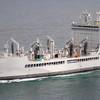
The U.S. Navy on Friday announced it has placed a $6.75 billion order with San Diego shipbuilder General Dynamics NASSCO…
US Offshore Oil Production Reawakens in Wake of Hurricane Francine

U.S. Gulf of Mexico energy firms on Friday were lumbering back from hurricane disruptions as offshore oil and gas producers…
Crew Rescued from OSV That Caught Fire Off South Africa
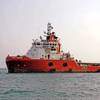
Fifteen crew members have been rescued from an offshore supply vessel (OSV) that went up in flames off the coast of South…
Second NSMV Patriot State Christened at Philly Shipyard

Patriot State, the second vessel in a series of new training ships for the U.S.' state maritime academies, was christened…
Sponsored Content
Lower carbon intensity solutions from pit to port.

Reduce carbon intensity in your marine operations with Chevron biofuels. Learn More
Lower carbon fuels to support your operations

Chevron’s suite of lower carbon intensity fuels can help you reach lifecycle carbon emissions targets
Biofilm is costing you money
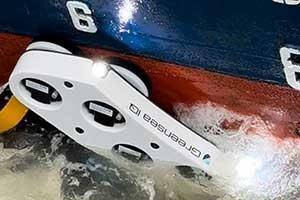
EverClean delivers up to 20% improvement to performance by removing biofilm
Second Officer - Mixed Work Schedule
First officer - mixed work schedule, damage control leader, chief radio electronics technician iat - mixed work schedule, third assistant engineer - mixed work schedule.

Green Marine Helps Maritime Blaze an Environmental Path

Mind the Drivetrain
Subscribe for Maritime Reporter E-News
Maritime Reporter E-News is the maritime industry's largest circulation and most authoritative ENews Service, delivered to your Email five times per week

- AMERICA'S CUP
- CLASSIFIEDS
- NEWSLETTERS
- SUBMIT NEWS

Comanche sets a new RORC Transatlantic Race record and win the IMA Trophy
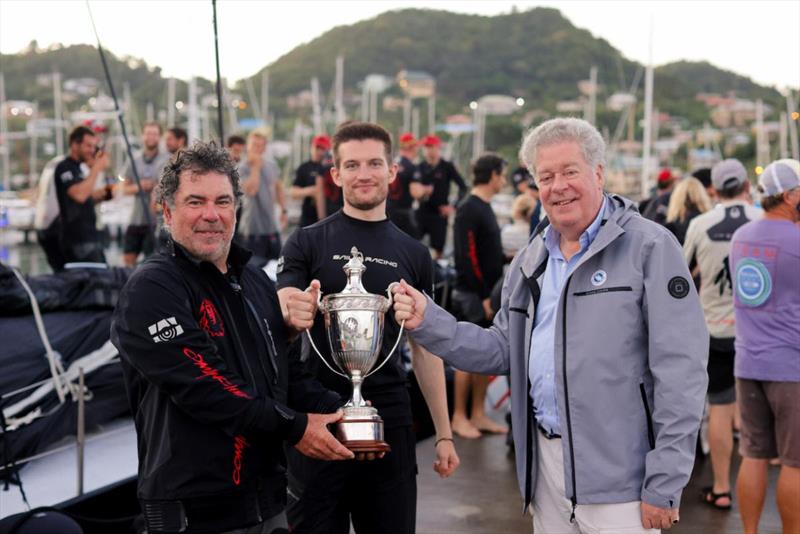
Related Articles
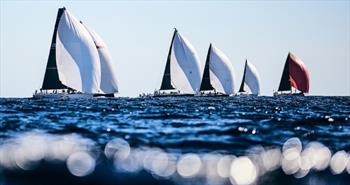

Royal Caribbean Cruise Ship Smashes Transatlantic Crossing Record
This post may contain affiliate links. if you click one, i may earn a commission at no cost to you. as an amazon associate, i earn from qualifying purchases..
Royal Caribbean’s Symphony of the Seas has set a new world record during its most recent transatlantic crossing. The ship has become the vessel to cross the Atlantic Ocean with the most guests and crew onboard.
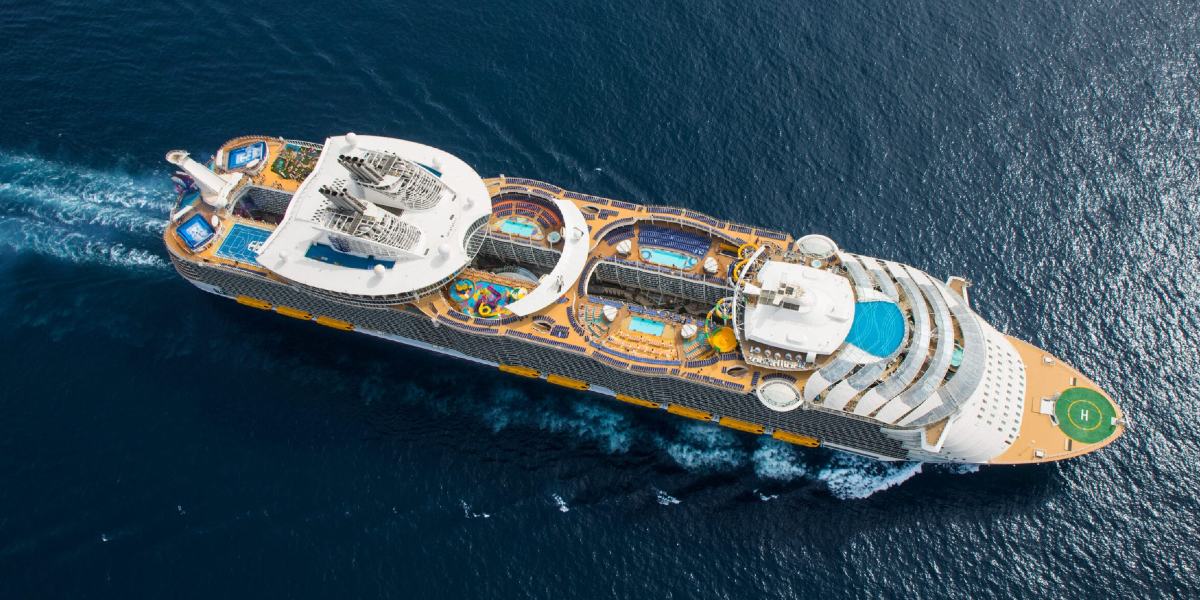
The massive ship started its record-breaking repositioning voyage on March 9, sailing at almost 100% occupancy. A total of 7,604 individuals , including 5,350 guests and 2,224 crew members, were onboard the Symphony as it crossed the ocean, connecting the United States to Spain.
After departing from the Port of Miami, the Symphony of the Seas continued to sail for nine full days before reaching the Spanish port of Málaga on March 19. The one-way itinerary also featured a visit to another port in Spain: Valencia.
What’s next for Symphony of the Seas?
Following the crossing, the Oasis-class ship is set to be drydocked at the Navantia shipyard in Cádiz, Spain, where it will undergo a program of works that includes technical overhaul and class work, as well as hotel upkeep, and other minor upgrades and refreshments.
On April 16, the Symphony of the Seas kicks off a program of seven-night cruises in the Western Mediterranean. The vessel is set to offer a regular itinerary that includes ports of call in Italy, Spain, and France, such as Naples, Palma de Mallorca, and Marseille.
After concluding its summer program, the Symphony is set to cross the Atlantic Ocean again in late October. The 14-night repositioning voyage sails from Barcelona to Fort Lauderdale and also features visits to Valencia, Cádiz, and Nassau.
Records smashed
The 228,081 gross tons Symphony of the Seas, built in 2018, was the world’s largest cruise ship between 2018 and 2022. That record was stolen by Wonder of the Seas , which is a touch bigger .
It is pretty remarkable that Symphony of the Seas just arrived in Europe carrying more than 7,000 people onboard. The cruise ship broke records to become the ship carrying the most people onboard during a completed transatlantic voyage in peacetime.
While impressive, it’s important to note that the transatlantic record set by Symphony of the Seas is not the all-time record for a cruise ship crossing the Atlantic Ocean.
In July 1943, the Cunard Line ocean liner Queen Mary set the record for a crossing of the Atlantic carrying 16,683 crew members and troops on a single passage.
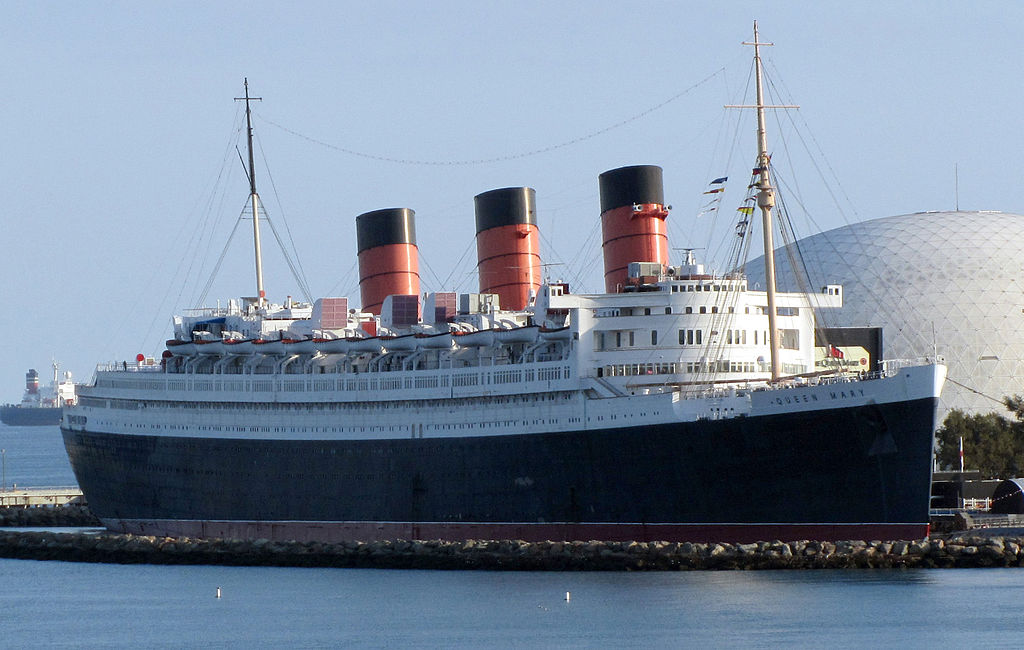
During the Second World War, Queen Mary sailed a massive 765,429 military personnel between the United States and the United Kingdom. Due to her tremendous efforts, it was later noted by Sir Winston Churchill that Queen Mary and her sister Queen Elizabeth had shortened the war efforts considerably.
In conclusion
Royal Caribbean International’s Symphony of the Seas has made history by breaking the transatlantic crossing record with the most paying guests combined with crew onboard. The vessel’s impressive feat is a testament to the advancements in technology and the growing demand for cruise travel.
As the Symphony of the Seas continues its summer program in Europe, it is sure to provide guests with an unforgettable experience, visiting some of the most beautiful destinations in the Western Mediterranean.
Related Posts:
- Symphony of the Seas Vs Titanic
- Symphony of the Seas Suites Guide
- How Long Is A Transatlantic Cruise Usually?

If you found this interesting, please share!
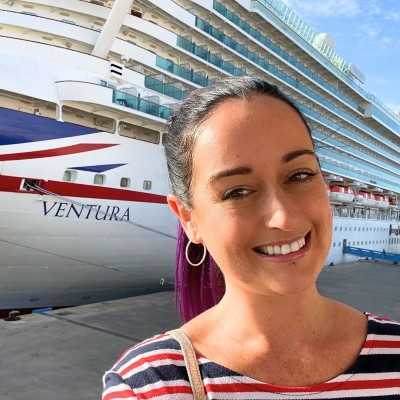
Jenni Fielding is the founder of Cruise Mummy. She has worked in the cruise industry since 2015 and has taken over 30 cruises. Now, she helps over 1 million people per month to plan their perfect cruise holidays.
Read more about me
MSC’s Explora Journeys Marks Major Milestones With Triple Celebration For Explora II, III, and IV
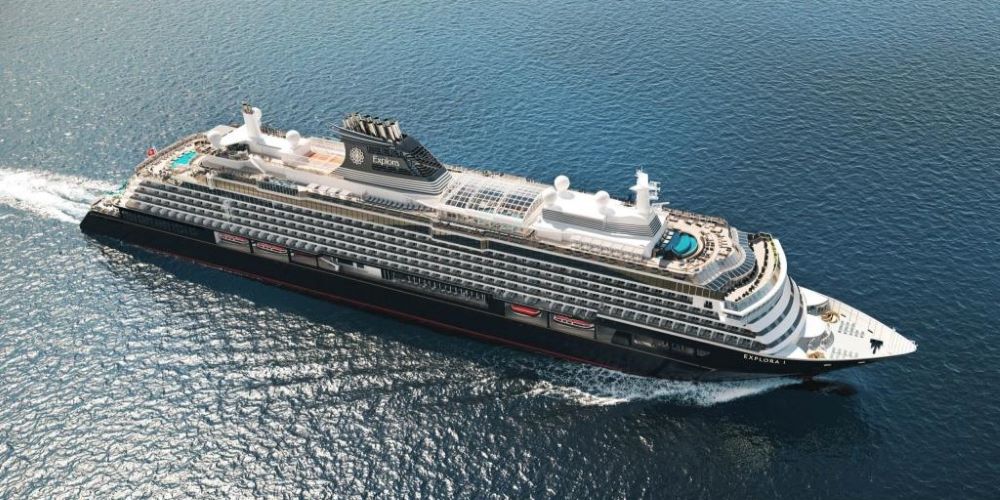
MSC’s luxury cruise brand, Explora Journeys, celebrated three significant milestones at Fincantieri’s Sestri Ponente shipyard in Genoa, Italy, on 12th September 2024. The events included the delivery of Explora II,…
Villa Vie Odyssey Delayed Following Sea Trials With Guests No Longer Having Belfast Expenses Covered Upfront
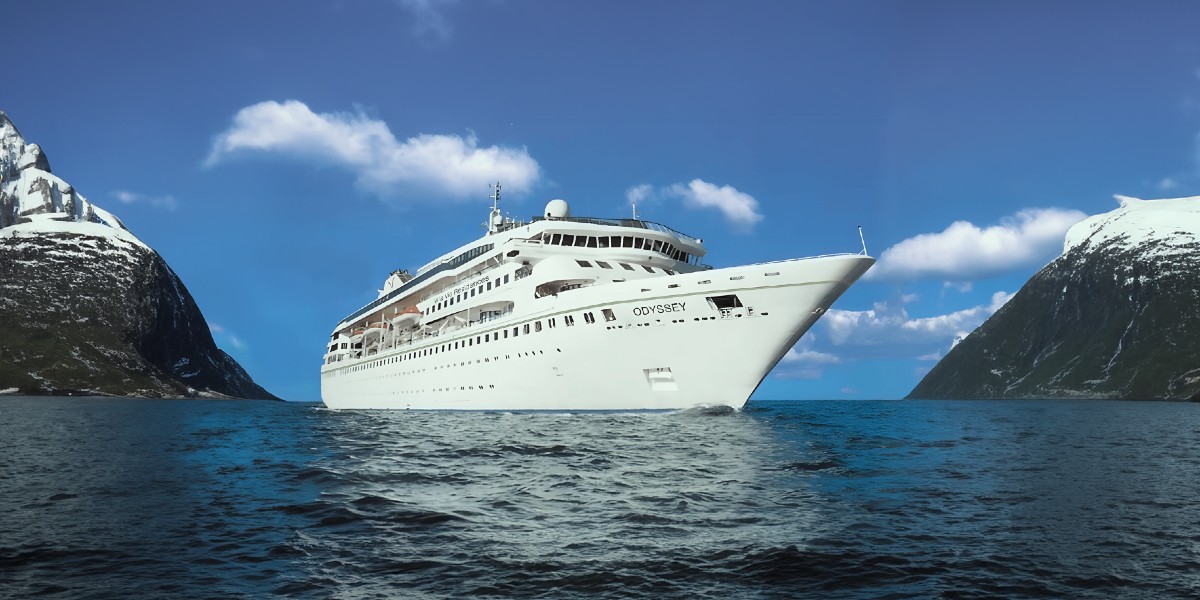
The launch of the Villa Vie Odyssey, a residential world cruise ship, has been delayed again, causing a lot of frustration among guests who have been waiting in Belfast since…
12-Year-Old Boy Dies On Harmony of the Seas Following Balcony Fall

A 12-year-old boy fell from a balcony on the most recent Harmony of the Seas cruise, and has tragically died. The boy fell from an interior balcony overlooking Central Park….
Sir Richard Branson Delights Passengers Across Virgin Voyages with Unforgettable Experiences

Sir Richard Branson recently embarked on a series of adventures with his Virgin Voyages cruise line, helping to delight guests onboard a range of Celebration Voyages. It all culminated on…
Leave a comment Cancel reply
Save my name, email, and website in this browser for the next time I comment.

Published on July 27th, 2023 | by Editor
In pursuit of trans-Atlantic record
Published on July 27th, 2023 by Editor -->
New York, NY (July 27, 2023) – The maxi trimaran Sails of Change set out today in an attempt to break the trans-Atlantic record. Yann Guichard and his 11-strong crew arrived in the United States the day before to take advantage of a favorable weather window.
In their sights is the record set by Pascal Bidegorry in August 2009 aboard the same boat (previously called Banque Populaire V) of 3 days, 15 hours and 25 minutes.
The maxi trimaran had arrived on the US east coast last May to prepare for one of the most prestigious records in the sailing world: crossing the Atlantic from west to east.
“It’s one of the most incredible records to go after, along with the Jules Verne Trophy and the 24-hour record,” said Guichard.”To beat it we need to maintain an average speed of around 33 knots throughout the attempt.

“As soon as we landed, we got together on the boat to get ready and cast off. The record period is between July and early November so we wanted to be ready, while keeping an eye of the most favorable weather window.”
Many of the 11 sailors joining Guichard had been on stand-by last winter for an attempt at the round-the-world Jules Verne Trophy. “There’s a great state of mind — everyone decided to come at the last moment,” said Guichard. “We all want to give it our all and try our luck.”
They have an incredible tool at their disposal: the largest ocean-racing trimaran ever designed at 37 metres long and 23 metres wide. Sails of Change holds two Jules Verne Trophies (2012, 2017), the Discovery Route record between Cadiz and San Salvador (2013), and a prestigious win in the Transat Quebec – Saint Malo (2016).
Sails of Change passed the Ambrose Light, the startling line for the attempt outside of New York Harbor, at 13:10:08 UTC (09:10:08 EDT), and is now heading for Lizard Point on Great Britain’s southwest coast, a course of 2,880 nm across the heart of the North Atlantic.
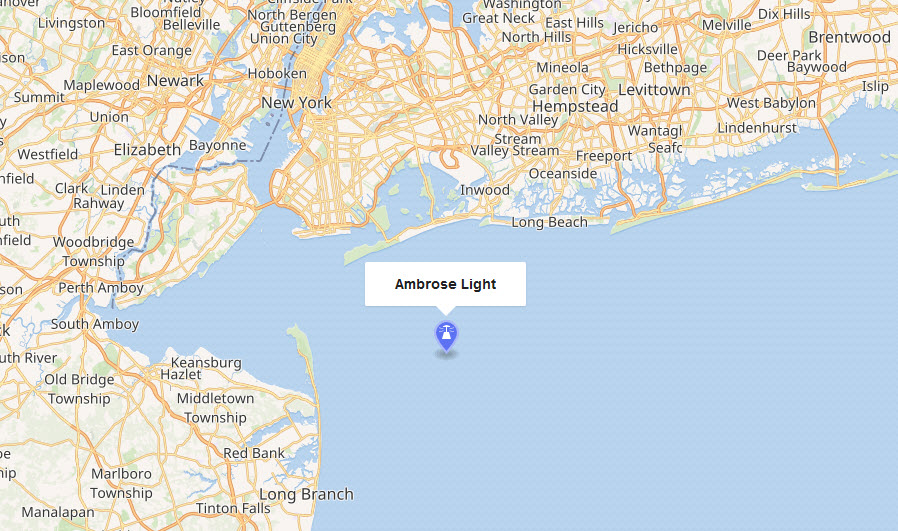
The weather window identified by the Sails of Change team offered the right conditions for the attempt. “The two weather models seem to be aligned,” explained Guichard. “We should set off ahead of a low-pressure system forming on the east coast which will move northwards.
“Throughout the crossing the wind will be from the south, southwest. The whole crossing should be on a starboard tack with only one or two gybes. The conditions will put us well within the record time.”
Guichard seeks to reclaim the record he previously held as one of the crew that lowered the time in 2006 to 4 days and 8 hours with Orange II, and again in 2007 on Groupama 3 in a time of 4 days and 3 hours.
Sails of Change crew: Yann Guichard (skipper) Duncan Spath (helmsman) Benjamin Schwartz (navigator) Xavier Revil (watch leader) Jacques Guichard (watch leader) Thierry Chabagny (helmsman-trimmer) Grégory Gendron (trimmer) Loic Le Mignon (trimmer) Thibault Julien (trimmer) Christopher Pratt (helmsman-trimmer) Clément Giraud (bowman) Pieter Tack (bowman)

Tags: records , World Sailing Speed Record Council , Yann Guichard
Related Posts
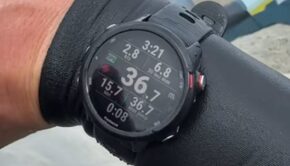
Setting sailing records in the sky →

Turning the hull of a really big boat →
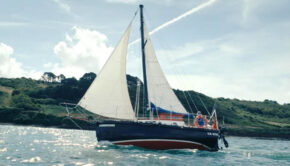
Getting smaller for record attempt →
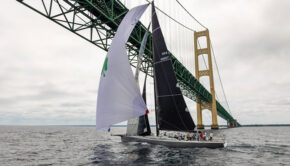
New elapsed record for Chicago Mackinac Race →
© 2024 Scuttlebutt Sailing News. Inbox Communications, Inc. All Rights Reserved. made by VSSL Agency .
- Privacy Statement
- Advertise With Us
Get Your Sailing News Fix!
Your download by email.
- Your Name...
- Your Email... *
- Email This field is for validation purposes and should be left unchanged.


How To Cross the Atlantic, Routes and Timelines
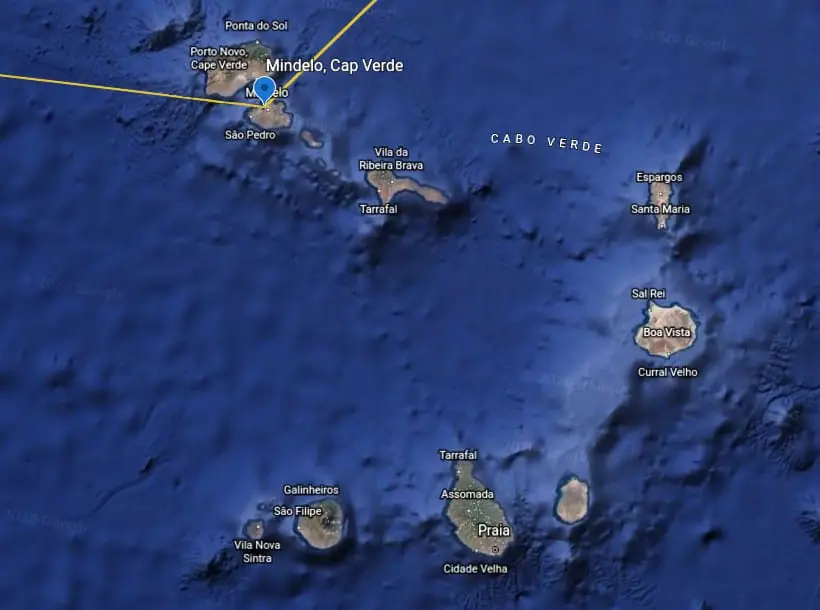
As an Amazon Associate, we earn from qualifying purchases. We may also earn commissions if you purchase products from other retailers after clicking on a link from our site.
Before the time of ocean liners and airplanes, crossing the Atlantic used to be a great adventure that took a long time to complete. Nowadays, it’s very different; it’s still a great adventure, but the time it takes to complete has changed.
Here’s how long it takes to cross the Atlantic on various types of boats.
| | | ||||
| Catamaran | 2700 | The Canaries to the Caribbean | 2-3 Weeks | 9-10 Knots | 10.5 – 11.5 MPH |
| Trimaran | 2700 | The Canaries to the Caribbean | 2-3 Weeks | 9-11 Knots | 10.5 – 12.7 MPH |
| Monohull | 2700 | The Canaries to the Caribbean | 3-4 Weeks | 6-8 Knots | 7-9 MPH |
| Ocean liner (Queen Mary II) | 3150 | New York and Southampton, England | 6-8 Days | 30 Knots | 35 MPH |
| (For reference) | |||||
| Ocean Liner | 1830 | New York and Southampton, England (3150 NM) | 17 Days | ||
| Ocean Liner | 1880 | New York and Southampton, England (3150 NM) | 9 Days | 22 Knots | 25 MPH |
| Airplane | 2010 | London – New York | 8 Hours | 478 Knots | 550 MPH |
Looking at this table we can clearly see that the time it takes to cross the Atlantic has decreased exponentially. Some big developments were of course the steam engine that allowed for bigger and much faster ships to travel the Atlantic while also bringing a lot more cargo.
If we look at the Sailboats in this list, we can see that the more hulls you have the faster it goes (if you want to know more about how that works, check out this article)
There is not a significant difference in time to complete between the catamarans and the trimarans in the short run, but in a circumnavigation of the world, the difference can be huge.
A monohull on the other hand is slower, this is mainly due to the amount of drag this type of hull has.
This table compares different types of boats under the same conditions and adds an airplane as a point of reference.
Transatlantic Crossing in Record Time
Here are the records for the fastest crossings of the Atlantic in a Sailboat.
| 5d 14h 21min 25s | Comanche | Monohull | 2016 | 21.44 knots (39.71 km/h) | |
| 3d 15h 25min 48s | Banque Populaire V | Trimaran | 2009 | 32.94 knots (61.00 km/h) | |
| 4d 11h 10m 23s | Sodebo Ultim | Trimaran | 2017 | 28.35 knots (52.50 km/h) |
The 2880 Nautical miles(5330 Km) long route starts at Ambrose Light in New York and finishes on an imaginary line between Lizard Point and Ushant of the coast of England
As you might have noticed, there aren’t any numbers for catamarans since the classes are divided between monohulls and multihulls. Since trimarans (three hulls) are faster than catamarans (two hulls), there is no real point in racing a cat.
What you also may have noticed are the ridiculously high speeds these boats are doing. Bear in mind that these are racing boats optimized for speed and made to smash world records.
There’s a big difference between the 28 knots a racing trimaran will make and the 9 knots a cruising catamaran will.
What Type of Sailboat Do You Need To Cross The Atlantic?
Crossing the Atlantic can be done in almost any sailboat or ship. As a matter of fact, it has already been done in small rowboats and open catamarans, so everything is possible.
If your question is what boat should I use to get a somewhat comfortable and safe trip, well, then we have something to talk about.
Choosing between a monohull or a multihull has more to do with personal preferences. Some people really like the stable platform of a catamaran, and others dont think it’s a real way of sailing and wants to be heeling over to its side to fully get that true sailing experience.
For me? Catamaran every day, speed, and comfort, but I’m also not a purist sailor in any way. I’m an adventurist, and the boat is merely a way to experience adventures.
The size I would say matters, bigger usually means it’s safer and can handle bigger waves, although it might be harder to handle on your own I something happens to you or your crew mid-sea.
Most people seem to cross the Atlantic with a boat in the 35 -45 ft spectrum, which fulfills both requirements!
If you are interested in digging deeper into what sized boat you should get, check out my article on Best Sized Catamaran for Ocean Sailin g
Other aspects you might consider are the size in terms of space onboard , how many people are you doing the passage with, the more people, the easier operating the boat will be. This assumes you have a well-trained crew that you know well.
And what are you going to do once you get there, is it the end of your trip or is the beginning. If you’re doing everything just to cross the ocean and then get someone else to bring it back, that’s one thing. But if its the start of a long adventure, the requirements are different. You are going to want more space for scuba gear, and other toys.
I do think the most important aspect is that you have a seaworthy boat that it’s capable of withstanding weeks on end with sailing in many times rough conditions.
This means that your equipment spent has to be the most expensive and handy, but it needs to be in good condition, and you need to be able to handle your great in every weather.
What Gear Do You Need to Cross the Atlantic?
Not including your average stuff when sailing, such as life vests, etc. There are some great that you might not be on your everyday say m still that could be of high importance during such a formidable sail as this.
- Emergency food
- Satellite coms
- Storm drogue (want to know what it is and how it works, read this)
- Spare parts(tiller, sails, etc.)
- Entertainment
Different Routes to Cross the Atlantic
Westward route: europe to the caribbean.
According to Jimmy Cornell, a well-known sailor and circumnavigator that has made his own research on the subject, Las Palmas is one of the biggest ports of departure for sailboats crossing the Atlantic.
Around 75’% of the sailboats that arrive in Las Palmas on the Canary Islands will depart for an Ocean crossing.
Getting to The Canary Islands, you should not be in a hurry; there are many very beautiful places en route. No matter where you are coming from this is a good stop well worth a visit.
Coming from the north of Europe, you have France, Spain, and Portugal. Entering from the Mediterranean, you have Italy, Croatia, Greece, and so many other interesting places that you shouldn’t miss unless you’re on a very tight schedule.
Once you reach Las Palmas, you can either go straight towards the Caribbean island of Barbados, or you can do a stop along the way at Cap Verde.
Planing a Stop on Cape Verde
A stop at cap Verde makes sense in many ways; for one, it makes the transatlantic trip more manageable by dividing it into two sections.
The second reason is that it gives you the possibility to stock up on fuel and water that you might have used more than you thought. Since Cap Verde is well developed when it comes to receiving boats doing this type of passage, there is no technical expertise on the island.
From Cap Verde, you can also take a direct flight to Portugal and onwards if the need arises.
Even though you might not plan to stop here, the recommendation is to at least plan your sailing, so you pass close to the islands, so if something happens, you can head to Mindelo port and fix it.
Another good reason why you would go close is that the further south you go, the better chance you will have of catching those sweet tradewinds that will take you safely and enjoyably to the warm waters of the Caribbean.

Westbound Route On a Catamaran
Sailing west is the preferred option for any sailor and especially if you are on a boat that doesn’t sail perfectly upwind, such as a catamaran.
Sailin g west and using the tradewinds is perfect on a catamaran, the sail will be faster and more comfortable than a monohull of the same size.
Looking at the 2019 ARC (Atlantic Rally for Cruisers), a 55ft french catamaran outclassed the 65 ft professionally sailed monohull with a 10-hour lead. All this while doing yoga on board, something that I can promise was not happening on the monohull.
The stable platform of a catamaran with the wind on your stern makes sailing west on a transatlantic passage perfect for Catamaran.
Eastbound Route: The Caribbean to Europe
Coming back to Europe, I would argue that the same principles are still valid: to stop at or pass by islands close enough to have the option of going into port if need, and using the tradewinds to your advantage.
Considering this, most people leave the Caribbean from Tortola, Britsh virgin islands, or St Marteen. These make great starting points for the eastward journey since they are the last point where there is plenty of fuel, spare parts, and food for the long and sometimes arduous trip back to Europe.
Though it is not necessary, many sailors make a halt at Bermuda; this is a good start to fix anything broken or wait for the right weather before your head on to the next part of your trip.
The Azores, the same goes here, you can skip it, but staying close to it adds safety and comfort if needed, and I would also stop by just to enjoy the islands. It’s a beautiful place and good for a few days of low-intensity cruising.
If you still have some energy left after the trip from Bermuda, one option is to head for a place called Horta. The place is well remembered for its hospitality towards sailors heading towards Europe.
Once you have refueled on diesel and energy, it is time to head for northern Europe. This is usually done by sailing north until the 45th latitude and then heading east.
When is The Best Time to Cross The Atlantic
Choosing a route has a lot to do with your intended purpose of the trip, are you going for a speed record, then going more north might be an option, and accepting the risk might be ok for you and your crew.
If you are going west but more interested in doing it safely and are able to spend a little more time out at sea, then the southern routes mentioned above with a departure date around November and December.
Going west on your way to the Caribbean, you’ll notice the days are getting warmer and longer; this is because going west, you also travel south towards the equator where the days and nights are equally as long be it summer or winter.
This weather window is to avoid the hurricane season in the Caribbean that ends in late November, these are the main risk and must be considered in your plan.
What Is The Best Route For an Atlantic Crossing
Taking into consideration the information above with trade winds, the possibility of breakdowns, and the collective knowledge of the area.
The best route for a westbound Atlantic crossing is from Las Palmas (on the Island of Gran Canarias) to Barbados Via Cap Verde. The best route going east is from St Marteen to the Azores Via Bermuda.
This is, of course, based on the assumptions we have discussed above, and it might not apply to your skillset or aim of the crossing.
Can You Cross the Atlantic Single Handed?
You can definitely cross the Atlantic on your own (short-handed). As a matter of fact, many do every year. Of course, this demands more of the sailor since there is nobody to ask for advice or to help while underway.
Neither is there anyone that will help you with handling sails or maintenance while underway; because of this, it is more dangerous and more difficult to solo sailor sail short-handed as it is also called.
The usual way is to either bring a crew of your own, recruit a crew from the port of exit, or find one online via crewseeker.net.
Is Transatlantic Passages Dangerous?
Sailing in big oceans is never a hundred percent safe. This is why it is an adventure if it was absolutely safe, where would the attractiveness and the excitement lie?
Looking at the data, there aren’t many accidents happening, and of those, there are even fewer that are deadly or leave the crew injured for life.
There are also ways to make it safer; we have discussed boat size and crew skills; other route selection factors are vital. It might not be the quickest to cross the Atlantic, but the southern route seems to be a safer bet.
Prepare yourself, your crew, and the boat, and the chances for accidents will still be there, but they will be small and manageable.
How Lonely Is Crossing The Atlantic?
Spending two to three weeks in the middle of the ocean can definitely be lonely, but it can also be the absolute opposite. If you’re sailing with a crew, you will share the same small space with everyone else, always bumping your elbow. If the weather is rough, you may all be a little tired, which also adds to the group dynamics.
But even if you would get sick and tired of your crew, there are ways to call back home. You might have a Satellite phone, which is expensive by the minute but a lovely way to hear the voice of a loved one back at land. Much better than a text message through Email.
Sending emails has been a pretty straightforward process since the SSB radio started to be utilized. This type of radio is very simplistic and has good reception up to thousands of miles .
The nice thing with this radio is that it allows for data traffic, which means not only are you able to receive weather updates, but you can also contact your family through Email.
Can You Get Rescued If Something Goes Wrong?
Yes, there might not be a coast guard or anything nearby, and you might be way out to sea, but there is help to get. Since every ship is listening to some set of frequencies, usually, the first step is to call for a Mayday on that channel.
If you’re not getting anyone’s attention, then they might still see you on the AIS, Automatic Identification System, which makes anyone around you know where you are.
Many times the crossing is done together with a lot of other vessels; this gives comfort as they might also be able to help in case of emergency.
If all this fails, you probably also will have your EPIRB, Emergency Position Indicating Radio Beacon , which is a gadget that can be activated through certain triggers such as water, tilt angle, or manually activated.
Once activated, it sends an emergency signal at different frequencies and relays the information back to shore for someone to come help you.
Owner of CatamaranFreedom.com. A minimalist that has lived in a caravan in Sweden, 35ft Monohull in the Bahamas, and right now in his self-built Van. He just started the next adventure, to circumnavigate the world on a Catamaran!
Leave a Reply Cancel reply
Your email address will not be published. Required fields are marked *
Save my name and email in this browser for the next time I comment.
Recent Posts
Must-Have Boat Gear for Catamaran Sailors!
Sailing is probably the most gear-intensive activity I've ever done; there are so many decisions to be made about what gear to buy now, for tomorrow, and what to definitely never buy. The gear on...
6 Best Trailerable Trimarans For Bluewater and Coastal Sailing
Having a boat costs a lot of money, even when you are not using it, marina fees, etc. And once it is in the water most sailors never go very far from their "home marina" and sailing will be somewhat...
672 Wine Club
- Motorcycles
- Car of the Month
- Destinations
- Men’s Fashion
- Watch Collector
- Art & Collectibles
- Vacation Homes
- Celebrity Homes
- New Construction
- Home Design
- Electronics
- Fine Dining
- Benchmark Wines
- Brian Fox Art
- Disneyland Resort
- Ka La’I Wakiki Beach
- Kalamazoo Grill
- Raffles Hotels & Resorts
- Sports & Leisure
- Health & Wellness
- Best of the Best
- The Ultimate Gift Guide
A British Man Will Attempt to Cross the Atlantic in This Suitcase-Sized Sailboat
Andrew bedwell knows big dreams can come in tiny packages. he plans an atlantic crossing in the 3'3" "big c," spending 60 days alone at sea., howard walker, howard walker's most recent stories.
- Rolls-Royce Debuted the New Phantom Scintilla at Monterey Car Week. Here’s Everything We Know.
- This Speedy 70-Foot Power Catamaran Is Designed to Cut Through Rough Waters
- These Slim New Catamarans Are Redefining the Category. Here’s How.
- Share This Article

Next spring, British sailor Andrew Bedwell will attempt to break the record for sailing across the Atlantic, in a boat that’s just 39 inches long. That’s right: 3’3″, or roughly the size of a large suitcase.
Bedwell, 48, will set off from St. Johns, Newfoundland in May and make the perilous 1,900-mile crossing to Lizard Point in Cornwall on England’s west coast, hoping to set a new record for the smallest vessel to ever sail across the Pond.
Related Stories
- This Barely Driven Aston Martin Valkyrie Could Fetch $3 Million at Auction
- Fore! Lexus and Malbon’s New SUV Is Here for Serious Golfers
- Review: Bentley’s Opulent Bentayga EWB Azure V8 SUV Is a Surprisingly Agile Beast
“I’m under no illusions that it’s going to be easy. But all my life I’ve taken on unusual challenges, though this is the ultimate,” Bedwell told Robb Report . He adds: “My wife thinks I’m crazy.”

Andrew Bedwell on Big C . The solo navigator will be locked into the tiny helm seat during the 1,900-mile crossing. Courtesy Andrew Bedwell
Bedwell’s goal is to break the record set in 1993 by American sailor Hugo Vihlen in his 5’4” boat Father’s Day . More than two feet shorter, his pint-sized craft will be even more spatially challenged for the six-foot-tall Englishman.
“I can just about sleep if I’m curled-up tight. And if I’m sitting upright, the top of my head is just an inch below the transparent dome that I use to see out of. There’s not much room to move around.”
Restroom facilities? Don’t ask.

“Big C” has a lead keel so it will right itself after capsizing—something Bedwell expects regularly. The mini boat was also designed to handle 60-mph gale-force winds and big seas. Courtesy Andrew Bedwell
There are also 12 watertight compartments—eight inside and four on the outside—to store supplies. Andrew hopes to complete the journey in 60 days, but will carry enough provisions for 90 days at sea. He’ll also have a manual watermaker that will fill a 1.3-gallon container in the bilge.
To power the yacht’s navigation gear, chart-plotter and radio there are solar panels on the stern, plus a tiny, hand-cranking generator as back-up.

Home sweet home: Bedwell will sit in this helm seat 24/7 for nearly two months on the crossing. Courtesy Andrew Bedwell
“We’ve designed the boat to survive a Force 10 storm [average wind speeds of 59 mph] with the hope that it’s just a Force 6 [28 mph]. For such a small boat, a massive amount of thought and planning has gone into its design.”
In a single-minded focus on using every inch of space, Bedwell’s wife Tracy has concocted a special high-protein dried beef jerky that will line parts of the hull.

A sense of scale with Big C out of the water. Courtesy Andrew Bedwell
“I’ll literally be eating the boat,” he says. “The stuff tastes pretty nasty, but it’s packed with all the nutrients I need. Sadly, there’ll be no room aboard for treats.”
The boat was originally designed by Bedwell’s close friend, fellow micro-yachting enthusiast and trans-Atlantic record-breaker, Tom McNally, who died in 2017 of cancer. In honor of his friend, the little boat is named Big C —also a play on big seas—and next year’s voyage will raise money for Cancer Research.

The current transatlantic record holder is Father’s Day , a 5’4″ boat sailed by Tom Vihlen in 1993. Courtesy National Maritime Museum Cornwall
Bedwell, a sailmaker by trade, isn’t new to sailing big oceans in small boats. In 2016, he single-handedly piloted his 21-foot Mini-Transat yacht around the entire coast of Britain. Two years later, he sailed the same tiny vessel to Iceland and into the Arctic Circle.
Bedwell has also set up a GoFundMe account . His progress can be followed through the Facebook page “Big C Atlantic Challenge.”
Read More On:
- Sailing Yacht
More Marine

Meet Spitfire, a New 164-Foot Superyacht Based on a High-Performance Patrol Boat

What It’s Like to Watch an America’s Cup Race Right on the Water

Austin Parker Unveils Not One but 6 New Yachts at Cannes Fest

This New 72-Foot Yacht’s New Hybrid Propulsion System Is the First of Its Kind

Meet the Wine Club That Thinks Differently.
Receive editor-curated reds from boutique California producers four times a year.
Give the Gift of Luxury
Latest Galleries in Marine

Spitfire Superyacht in Photos

The AX/E 22 and AX/E 25 in Photos
More from our brands, dresses with subtly sheer layers are trending on the emmy awards 2024 red carpet, ufc 306 at sphere pulls in record $22m for ufc, sphere, san sebastian’s culinary zinema opening film ‘mugaritz. no bread no dessert’ reveals the method behind the madness, bows teaser (exclusive), new york supreme court throws out lawsuit accusing helen frankenthaler foundation of exploiting the late artist’s legacy, the best yoga mats for any practice, according to instructors.
July 1, 2023 - 4 PM CET
Genoa In-Port race starts in
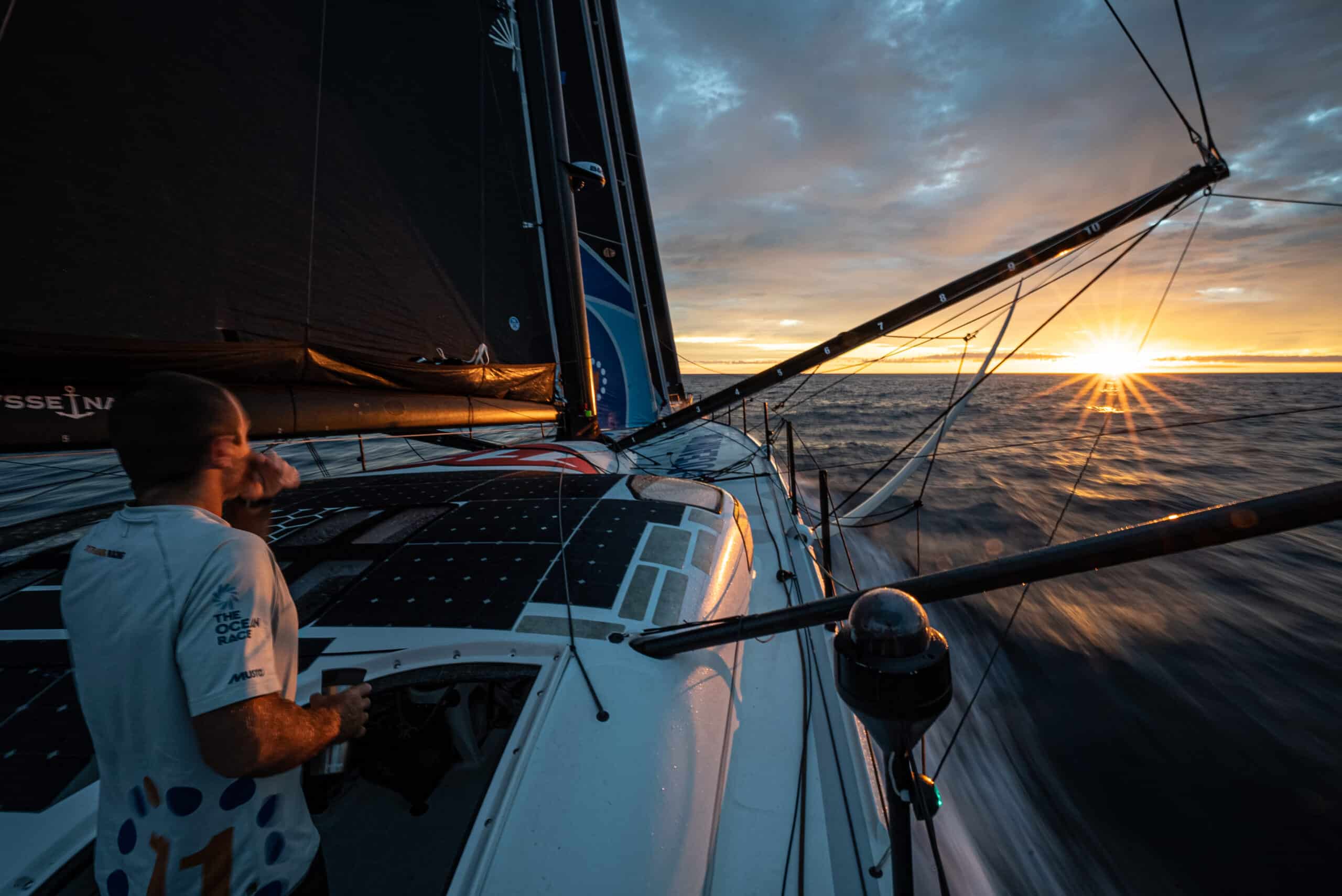
Team completes “fastest” transatlantic to date setting new benchmark for 24-hour distance; Fall plans unveiled
A week has passed since we returned to our French base in Concarneau, Brittany after a 3,050 nautical mile transatlantic training run from our US base in Newport, Rhode Island, and the data sets from onboard shows a new benchmark for distance covered in 24-hours by a yacht 60-foot or under.
Two days after leaving Newport, the crew began the start of a 24-hour stint in fast conditions, sailing 560.54-nautical miles [621 miles or 1,037 kilometers] at an average speed of 23.36 knots [26.88 miles/h or 43.26 kilometers/h], which would be the furthest recorded distance sailed by a boat 60-foot or less, and the first to break the 1,000 kilometer barrier.
This distance would be 20.29 nautical miles* further than the current World Sailing Speed Record Council (WSSRC) record, held by the IMOCA Hugo Boss [which 11th Hour Racing Team went on to own and race as Alaka’i], skippered by Alex Thomson with a crew of four, who covered 539.71 nautical miles**, at an average speed of 22.49 knots*** in 2018.
The Team did submit its data to the WSSRC on arrival in Concarneau, but the Council is unable to ratify the data as the team didn’t notify the Council of a record attempt before setting off from the USA.
Skipper Charlie Enright’s (USA) crew for the crossing on the Team’s sixty foot IMOCA race boat, Mālama , were Simon Fisher (GBR), Francesca Clapcich (ITA), Jack Bouttell (GBR/AUS), and media crew member, Amory Ross (USA). The five-strong crew completed the entire crossing in 7 days, 13 hours and 15 minutes, one of the fastest sailboat crossings of the world’s second largest ocean they’ve experienced. Between them they have 56 transatlantics under their belts.
“That was my sixteenth transatlantic crossing and the fastest one to date,” commented Enright. “We didn’t leave Newport with an eye on the weather systems and weren’t pushing for any kind of record, but the numbers kept on creeping up. We had perfect wind conditions with an average of 20 knots of breeze and a cooperative sea state. Mālama just flew, and although it made living conditions onboard very uncomfortable with the slamming, it was great to see her like this in action. “We weren’t chasing a record, and didn’t set out expecting to achieve one, but I believe this boat is something special. It’s a real testament to everyone’s hard work – the designers, boat builders, and our shore team, and shows that a sustainable approach to the build of a boat can work hand in hand with on-the-water performance. I am sure this distance will be surpassed a number of times during The Ocean Race, but to see what can be achieved with Mālama without chasing a record of any sorts is of course a small boost of confidence five months out from the start of the Race,” Enright concluded.
The sailing team remained in Concarneau for a few days of debrief, data analysis and coaching before Mālama headed into the build shed for a three week refit, ready to sail again in early September. The Team is currently planning on entering the Défi Azimut, a multi-day regatta based out of Lorient, France, from September 15-18, that will pit the four announced entries into The Ocean Race 2022-23 against each other for the first time, and in a fully crewed set-up.
The Défi Azimut has opened its startline to crewed IMOCAs for the first time in the history of the event. The unique mixed-format regatta includes timed speed runs, a 48-hour race and a dash around the Île de Groix – a sprint off the coast of Lorient.
The current plan for the rest of the year will see the Team remain in France, where they will take on new sails and foils, and with blocks of training with Pôle Finisterre, the world renowned training school for offshore sailing.
Mark Towill, CEO of 11th Hour Racing Team commented, “This Transat has been the culmination of two months of activity with our 11th Hour Racing family in Newport, Rhode Island. We celebrated #OceanHourWeek with schools and community groups learning about our impact on ocean health, were joined by over 1,000 people for the global premier of Under the Hull , the feature film focused on the Team in the run up to last year’s Transat Jacques Vabre, and also had an incredible four days sailing in Narragansett Bay joined by young adults from local sailing clubs across the Bay. It’s been great to spend time within the wider organization but for now, it is head-down for the shore crew to get the boat prepared for a busy Fall of training and racing.”
11th Hour Racing Team is one of four IMOCA teams currently announced to take part in The Ocean Race 2022-23, billed as the world’s longest and toughest sporting event. The Race will leave Alicante, Spain on January 15, 2023 and the teams will race West around the world, stopping in seven locations including Newport, Rhode Island, in May 2023, the Race’s only North American stopover.
* 20.29 nautical miles is 23.35 miles or 37.6 kilometers
** 539.71 nautical mile is 621.08 miles or 999.54 kilometers
*** 22.49 knots is 25.88 miles per hour or 41.65 kilometers per hour
Privacy Overview
| Cookie | Duration | Description |
|---|---|---|
| cookielawinfo-checbox-analytics | 11 months | This cookie is set by GDPR Cookie Consent plugin. The cookie is used to store the user consent for the cookies in the category "Analytics". |
| cookielawinfo-checbox-functional | 11 months | The cookie is set by GDPR cookie consent to record the user consent for the cookies in the category "Functional". |
| cookielawinfo-checbox-others | 11 months | This cookie is set by GDPR Cookie Consent plugin. The cookie is used to store the user consent for the cookies in the category "Other. |
| cookielawinfo-checkbox-necessary | 11 months | This cookie is set by GDPR Cookie Consent plugin. The cookies is used to store the user consent for the cookies in the category "Necessary". |
| cookielawinfo-checkbox-performance | 11 months | This cookie is set by GDPR Cookie Consent plugin. The cookie is used to store the user consent for the cookies in the category "Performance". |
| viewed_cookie_policy | 11 months | The cookie is set by the GDPR Cookie Consent plugin and is used to store whether or not user has consented to the use of cookies. It does not store any personal data. |
- https://www.facebook.com/11thHourTeam/
- https://twitter.com/11thhourteam
- https://www.linkedin.com/company/11th-hour-racing/about/
Yachting Monthly
- Digital edition

Crazy or sane? Record attempt for the smallest boat to cross the Atlantic
- Katy Stickland
- May 18, 2022
Andrew Bedwell is planning to smash the record for sailing the smallest boat to cross the Atlantic. His vessel, Big C is just over 1m/3.2ft long
The smallest boat to cross the Atlantic was 5ft 4inches, sailed by American sailor, Hugo Vihlen in 1993.
Many have tried but failed to break this record. But sailor Andrew Bedwell believes he can regain this most unusual of crowns for Britain.
The 48-year-old solo skipper is no stranger to sailing in small craft or pushing the limits.
In 2015, he finished the Jester Baltimore Challenge aboard his 23ft Hunter 707, Outlaw .
The following year, Andrew sailed around Britain singlehanded in his 6.5m (21.3ft) Mini Transat 241 Blue One.

Big C will be sailed using dual furling headsails, outriggers and an A frame mast. Credit: Andrew Bedwell
This was eclipsed by his most extreme challenge to date – sailing 241 Blue One from Whitehaven in Cumbria to Iceland and into the Arctic Circle and back in 2019.
The yacht has no creature comforts – which Andrew actually prefers, being of the Roger Taylor school of ‘back to basics’ sailing.
He slept no more than 20 minutes at a time on a beanbag (the boat had no bunk) and had a bucket as a toilet.
In May 2023 he plans to push himself further and attempt the record for the smallest boat to cross the Atlantic.
The 1,900 mile voyage will start in St Johns, Newfoundland and finish off Lizard Point in Cornwall.
He expects it to take 60 days (that is what he has told his wife) but admits it might take longer, as he will be at the ‘mercy of the weather ‘.
‘There will be days when the wind s are not favourable and I just have to chuck out a sea anchor which is mounted on the bow and just furl everything in and sit there. These will not be the pleasant days,’ he noted.
For now, Andrew is concentrating on finalising his vessel – Big C, which was designed and built by Liverpudlian sailor Tom McNally, a legend in micro-yachting who died in 2017 from cancer.

Tom McNally with his boat Big C which he planned to sail across the Atlantic and back. Andrew Bedwell has now modified the boat to make his own record attempt. Credit: Lorraine McNally
Tom set the smallest boat to cross the Atlantic record in 1993 in his 5ft 4.5 inch boat, Vera Hugh . It was broken by Hugo Vihlen.
Andrew, who has run a boat repair business, has modified Big C himself. The boat is built out of GRP with a foam core. He has modified McNally’s plans, making the boat smaller and essentially custom building the vessel for his height.
Even so, at 6ft tall, he still can’t stand up in the craft when the dome is down and will have to follow exercises provided by a physiotherapist to keep his legs functioning.
‘When my backside is sitting on the floor, my head is literally an inch away from the dome at the top and being just over a 1m long, I can only stretch my legs out about two-thirds of the way,’ explained Andrew.
‘I do appreciate the nice things in life but I prefer to rough it and making my life harder for myself; this seemed the ultimate challenge, especially as it is my 50th birthday next year. There is no toilet on board so in fact my only comfort on board Big C will be a flannel, which will be heavily tied on to the outside and hanging overboard.’
Continues below…

Roger Taylor: Impossible voyage conquered
Roger Taylor navigates his engineless 24ft Mingming II on a 4,000 mile nonstop voyage around the usually icebound waters of…

25 Cruising Heroes for the 21st century
Katy Stickland chooses 25 modern cruising sailors who have inspired others to throw off the bowlines and explore by sail

How to sail across the Atlantic and back
Confined to quarters during the pandemic, many sailors are itching to slip their lines and sail for the sun. Elaine…

Dustin Reynolds: dual amputee finishes circumnavigation
Dustin Reynolds, who lost his arm and part of his leg in an accident, has sailed solo around the world…
The boat has 12 watertight compartments – eight internally and four externally – as well as open and closable vents. Once fully sealed, Big C only has 40 minutes of air inside before Andrew would pass out.
Food has been worked out by a nutritionist and will be made by Andrew’s wife, before being packed into the craft.
‘I don’t want to say vile, but the food is not the most flavoursome. We will pack it outside of Big C in the external tanks to increase stability and internally, using the external food first.’
Big C ‘s keel will hold 5 litres of drinking water and there is a manual watermaker to top up the tank which will be operated by Andrew’s right hand.
Power will be provided by solar panels on the back of the craft, and there will be a hand-cranked generator which will be operated by both Andrew’s left and right hand.
The main compartment will have AIS, VHF radio and a small chartplotter to keep power consumption down.

Big C will begin sea trials in mid-June ahead of the challenge in May 2023. Credit: Andrew Bedwell
Big C is a ‘downwind, tradewind vessel’. She has twin rudders (in case one breaks) dual furling headsails, outriggers and an A frame mast.
‘We have twin furling headsails, you can furl them or unfurl them. I can unfurl them from inside, I can sheet them from inside. We will be relying on the tradewinds,’ said Andrew, who is from Scarisbrick, Lancashire.
In heavy weather , Andrew will use a full harness to strap himself to Big C . He will also have a full support crew to track and guide his passage.

Andrew Bedwell will be trying to break the record set by American sailor Hugo Vihlen in 1993 in his 5ft 4in boat, Father’s Day . Credit: Tom Meaker/Alamy Stock Photo
Big C will start sea trials in mid-June, and Andrew has several longer passages planned before the record attempt.
He is also looking for sponsors. He had hoped the drinks firm, Red Bull would back him but the firm declined saying of the challenge it was ‘inspirational, but mad’.
‘My 9 year old daughter thinks it is incredible. I hope she is proud. My wife thinks I am absolutely crackers,’ said Andrew. ‘But you have to push yourself. Life is about challenges and there are an awful lot of people going through life thinking ‘I wish I had done…’ I’ve gone the other way and say I will do it.’
The Big C Atlantic Challenge will be raising money for Cancer Research in tribute to Tom McNally.
Who was Tom McNally?
Liverpudlian Tom McNally was intent on setting records for the smallest boat to cross the Atlantic.
He achieved his goal in July 1993 when he sailed the 5ft 4.5 inch boat, Vera Hugh , from Lisbon, Portugal to Ft. Lauderdale, Florida via Puerto Rico, despite a cracked hull and having run out of water and food.
The boat was partly built out of an old discarded wardrobe and the hatch was made out of an old washing machine door.
Tom beat the world record set by American sailor Hugo Vilhen in 1968 after he crossed in April Fool, which was 5ft 11in.
But Tom’s glory was was short lived when Vilhen sailed the 5ft 4in Father’s Day from Newfoundland to Cornwall in 105 days, reclaiming the crown in September 1993.

Tom McNally designed Big C himself. Credit: Ajax News & Feature Service / Alamy Stock Photo
Undeterred, Tom tried to take it back.
In 2002 he attempted, but failed, to cross the Atlantic in the tiny 3ft 10.5in Vera Hugh – Cancer Research. Having sailed 800 miles from Gibraltar to Gran Canaria, the boat and all his equipment was stolen from the harbour at Mogan.
In 2009, he planned a double Atlantic crossing in his purpose-built 3ft 10inch boat, The Big C , to raise money for Sail 4 Cancer.
His route would have seen him sail from Cadiz to the Canary Islands, and on to Puerto Rico. Tom was then planning on sailing north along the eastern seaboard of the USA before heading back to him home port of Liverpool.
Sadly, illness thwarted his plans.
After battling cancer for more than eight years, Tom McNally died on 12 June 2017 at the age of 77.
Enjoyed reading Crazy or sane? Record attempt for the smallest boat to cross the Atlantic?
A subscription to Yachting Monthly magazine costs around 40% less than the cover price .
Print and digital editions are available through Magazines Direct – where you can also find the latest deals .
YM is packed with information to help you get the most from your time on the water.
- Take your seamanship to the next level with tips, advice and skills from our experts
- Impartial in-depth reviews of the latest yachts and equipment
- Cruising guides to help you reach those dream destinations
Follow us on Facebook , Twitter and Instagram.

The Tactical Air Network
Global Military Aviation
The SR-71’s Record-Breaking Transatlantic Crossing
September 1st, 1974, was pretty much just another average day for New Yorkers. It didn’t look like either the Yankees or the Mets would make the playoffs (neither did), and the temperature was in the high-70s (Fahrenheit) at the tail end of yet another long, hot summer. Most were unaware of what was unfolding in the skies above them at altitudes closer to the edge of space than the regular cruising heights of the glistening airliners belonging to Pan Am, TWA and other carriers of the time. Controllers on the ground at LaGuardia Airport and John F. Kennedy International Airport were well-informed ahead of time of what would soon be streaking over their heads, departing just as quickly as it appeared.
Meanwhile, Majors James V. Sullivan and Noel F. Widdifield, the pilot and reconnaissance systems officer (RSO) respectively of the sleek black jet ripping through the airspace over New York, were steeling themselves with mere seconds left on the clock before they began a record-setting flight- the fastest Transatlantic crossing in history. Their chariot was none other than the fastest manned jet in history (at least that we know of), an aircraft that looked more like something out of a science fiction comic book than a conventional design that would come off the drafting tables at one of the most well-established aerospace corporations in the country. Their Lockheed SR-71A Blackbird, serial number 64-17972, was slated to function as a static display showpiece at the Farnborough Air Show for a week- the very first time the top secret spy plane was shown off outside the United States. US Air Force and Lockheed Corp. officials had agreed to and planned the flight over, which would see the the Blackbird cross imaginary gates over New York and speed over to another set of imaginary gates set up over London. At the time, New York City-to-London was arguably one of the most popular Transatlantic routes available to travelers; at least those who could afford it. Airlines regularly strove to decrease the time taken to travel between the two cities, culminating in the introduction of Concorde, the supersonic delta-winged European airliner which was retired just 12 years ago. The Concorde still holds the record for the fastest airliner crossing of the Atlantic Ocean, with a time of 2 hours, 52 minutes, 59 seconds, right from takeoff at London Heathrow International (LHR) to John F. Kennedy (JFK) in February of 1996. However, it still doesn’t come close to what Sullivan and Widdifield were able to pull off that September day, 22 years before Concorde’s record-setting flight.
US Senator Barry Goldwater was responsible for bringing about the Transatlantic crossing, after having flown as a passenger in a Blackbird himself. Having retired from the Air Force Reserves in 1967 as a Major General, and possessing significant political clout due to his lengthy career as a politician in Congress, Goldwater was able to convince then-US President Gerald R. Ford to allow the Air Force to fly a Blackbird to Farnborough for the rest of the world to see, thus demonstrating the power and might of American innovation and engineering. When Ford approved of the trip, the Blackbird’s parent wing’s commanding officer picked out two crews to fly one of his birds to and from the air show. Though the SR-71 wouldn’t be performing its usual reconnaissance overflights, operations personnel planned out the whole event as though it was a regular mission. Air bases for emergency diverts were assigned, radio frequencies for tanker and ground control communications were listed and no detail was left out.

The Blackbird, belonging to a reconnaissance squadron in California on the west coast of the United States, was slated to link up with a KC-135Q Stratotanker, one of a specially-modified fleet available exclusively to support the Blackbird program. Being that the Blackbird was already at approximately 2000 miles per hour when crossing the New York gates, it needed a minimum of one in-flight refueling, thanks to the astonishing amount of fuel it consumed while in afterburner. The route was calculated at around 3461.53 miles, and radio coordination between controllers in New York and London would ensure the highest degree of accuracy in timing the Blackbird’s flight across. Having already surged across the Atlantic in a sustained supersonic cruise at speeds in excess of Mach 2.5-2.6 (the Blackbird was actually capable of hitting Mach 3.5, and cruising at around Mach 3.2-3.3), Sullivan began a descent that would bring him to the only refueling point of their mission. After tanking up, the duo climbed away and once again nudged the throttles ahead. The time taken up by the in-flight refueling was deemed virtually negligible when the Blackbird flew through the London gates. Overall, the flight had taken 1 hour, 54 minutes and 56.4 seconds, and maintained an average speed of about 1807 miles per hour. Just about an hour less than what the Concorde would accomplish 22 years later. Upon observing his brainchild set the Transatlantic speed record (which still remains today), Clarence “Kelly” Johnson, who was flown over to Farnborough to receive the aircraft upon its arrival, proudly remarked, “It has exceeded all my expectations.”

The exact same Blackbird, flown by a different aircrew (Captain “Buck” Adams and Major William Machorek (pilot/RSO)) for the return flight to the US, set yet another speed record by flying from London to Los Angeles (5447 miles) in 3 hours, 47 minutes and 39 seconds at an average speed of 1435 miles per hour. If the Federal Aviation Authority and the Air Force hadn’t imposed speed restrictions on the aircraft, especially over a number of US cities it flew over on its run, the time it took would have probably cut down even further. Even with the restrictions put in place, local police departments and military switchboards were lit up with reports of sonic booms and resultant shattered windows. Years later, the very same Blackbird would once again set a number of records including the fastest time for a Los Angeles-to-Washington, DC cross-country route on its very last flight to its current resting place, the Smithsonian’s National Air and Space Museum. On March 6th, 1990, Lieutenant Colonels Ed Yeilding and Joseph Vida (pilot and RSO respectively) flew Blackbird 64-17972 from Palmdale, California to Dulles International Airport, just outside of DC, averaging 2124 miles per hour and finishing the flight within 1 hour, 4 minutes and 20 seconds; another record that hasn’t been broken and likely will remain in place for years and years to come. This also happened to be the last SENIOR CROWN (the USAF’s official name for the Blackbird program) flight in history. Today, 64-17972 sits on permanent display at the Smithsonian’s Udvar-Hazy annex to the National Air and Space Museum.

Share this:
- Click to share on Facebook (Opens in new window)
- Click to share on Twitter (Opens in new window)
- Click to share on LinkedIn (Opens in new window)
- Click to email a link to a friend (Opens in new window)
- Click to print (Opens in new window)
- Click to share on Reddit (Opens in new window)
- Click to share on Pocket (Opens in new window)
- Click to share on Tumblr (Opens in new window)
- Click to share on WhatsApp (Opens in new window)
Published by
Ian d'costa.
Ian is the managing editor of TACAIRNET. You can find his work on Military Times, Business Insider, We Are The Mighty, Real Clear Defense, and more. View all posts by Ian D'Costa
Leave a comment Cancel reply
- Already have a WordPress.com account? Log in now.
- Subscribe Subscribed
- Copy shortlink
- Report this content
- View post in Reader
- Manage subscriptions
- Collapse this bar
The Geography of Transport Systems
The spatial organization of transportation and mobility
Liner Transatlantic Crossing Times, 1833 – 1952

Note: Liverpool / New York. Source: data from P.J. Hugill (1993) World Trade since 1431, Baltimore: Johns Hopkins University Press, p.128. Stopford, M. (2009) Maritime Economics, Third Edition, London: Routledge.
The passenger liner era roughly lasted for about 100 years, from the mid-19th century to the mid-20th century. Its evolution can be divided into four distinct phases:
- Introduction . The steamship Great Western can be considered one of the first liners in 1838, crossing the Atlantic in 15.5 days. Early liners were made of wood and used paddle wheels, often complemented by sails, as the main form of propulsion. Their capacity was limited to less than 200 passengers. This phase demonstrated the possibility and market potential of transatlantic liner services.
- Growth . By the 1860s, the introduction of iron hulls, compound steam engines, and screw propulsion significantly reduced crossing times to about 8-9 days. No longer limited by the technical limits of wood armatures, the size of liners increased substantially, with a tonnage exceeding 5,000 tons and a capacity of 1,500 passengers. The number and frequency of liner services across the Atlantic (and across the world) increased substantially as the market potential was being realized.
- Maturity . The early 20th century represented the Golden Age of the liner, where those ships dominated long-distance passenger movements. In 1907, the liner Mauretania with a capacity of 2,300 passengers, was able to cross the Atlantic in 4.5 days, a record held for 30 years until the liner Queen Mary reduced the crossing time by half a day (4 days). Liners reached their operational capacity of around 1,500 to 2,000 passengers, and Atlantic crossing times stabilized around 5 days. They relied on quadruple screws using turbine steam engines. This also corresponded to the peak American immigration years from European countries, a process to which liners contributed substantially.
- Obsolescence . By the 1950s, the prominence of the liner was challenged by the first regular transatlantic commercial flights. This challenge quickly asserted itself, and in a decade, the liners shifted from being the main support of transatlantic passenger movements to complete obsolescence. One of the last liners, the United States (mainly made of aluminum), held the transatlantic crossing speed record of 3.5 days in 1952. By the 1960s, air transportation had overtaken the supremacy of liners for transatlantic crossings, and reference time became hours instead of days. Liner services disappeared, and the surviving ships became the first cruise ships .
The usage of ships for carrying passengers is now restricted to cruise shipping, ferries, and small-scale passenger crafts in archipelago countries (Indonesia, the Philippines, Greece, the Caribbean) or great river systems in developing economies (Chang Jiang, Huang He, Nile, and Amazon).
Share this:
- CruiseMapper
- Cruise news
- Cruise Industry
- Royal Caribbean's ship Symphony OTS sets new Transatlantic...
Royal Caribbean's ship Symphony OTS sets new Transatlantic Crossing Record
RCI-Royal Caribbean added another world record to its roster, as the brand carried the most people ever on a single Transatlantic crossing.
In addition to being currently the world's second-largest passenger ship (after the sistership Wonder OTS ), Symphony OTS now holds the record for the most people on a Transatlantic crossing.
Symphony OTS arrived in Malaga (Spain) from Miami (Florida USA) over the weekend carrying a total of 7604 people (5350 passengers plus 2224 staff/crew) on a 12-night USA-Europe relocation voyage (RepositionCruises.com)
The liner, which was sailing at ~100% occupancy, started the record-breaking voyage on March 9th.
After this sailing, Symphony OTS is entering into a routine drydock (at Navantia shipyard in Cadiz ) for hotel refreshes, some technical upgrades and other minor projects.
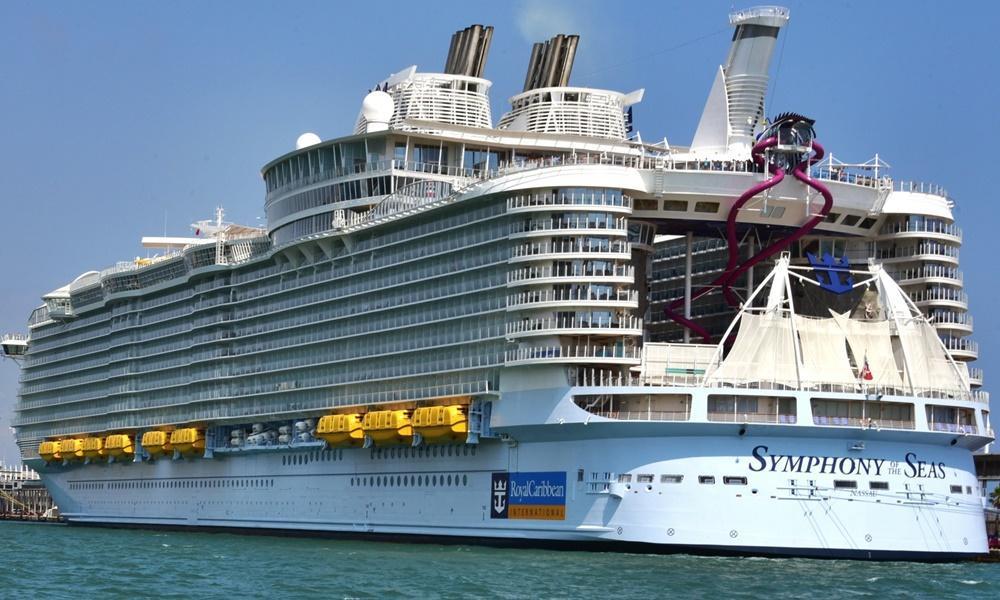
On April 16th, the vessel is scheduled to start a spring and summer European program based on 7-night Western Mediterranean roundtrips from homeports Barcelona (Spain) and Civitavecchia-Rome (Italy) . The itineraries visit ports in France, Italy, and Spain. 2023 marks Symphony‘s first season in Europe in 5 years since the liner's debut in 2018.
According to information sent by one of our readers, Craig, the most people carried on a transatlantic voyage was by RMS Queen Mary during a sailing from July 25-30, 1943. In that sailing, the vessel carried 15,740 troops and 943 crew (Total = 16,683). Symphony’s new record for the most “pleasure cruisers” ever to transit the Atlantic is impressive, but clearly, it is well short of the record held by the Queen in terms of ‘people’ on board for a crossing.
- Cruise search
- Atlantic Coast, Azores & Madeira
- Northern Europe
- Mediterranean Sea
- Canaries & Morocco
- Caribbean – Lesser Antilles & Grenadines
- Bahamas & Florida
- Costa Rica & Central America
Transatlantic Crossing
- Service package
- Special offer
- Private charter
- Special occasion
- SEA CLOUD II
- SEA CLOUD SPIRIT
- Fascinated by windjammer
- Low-impact tourism
- Newsletter subscription
- Feine Privathotels
- Meisterkreis
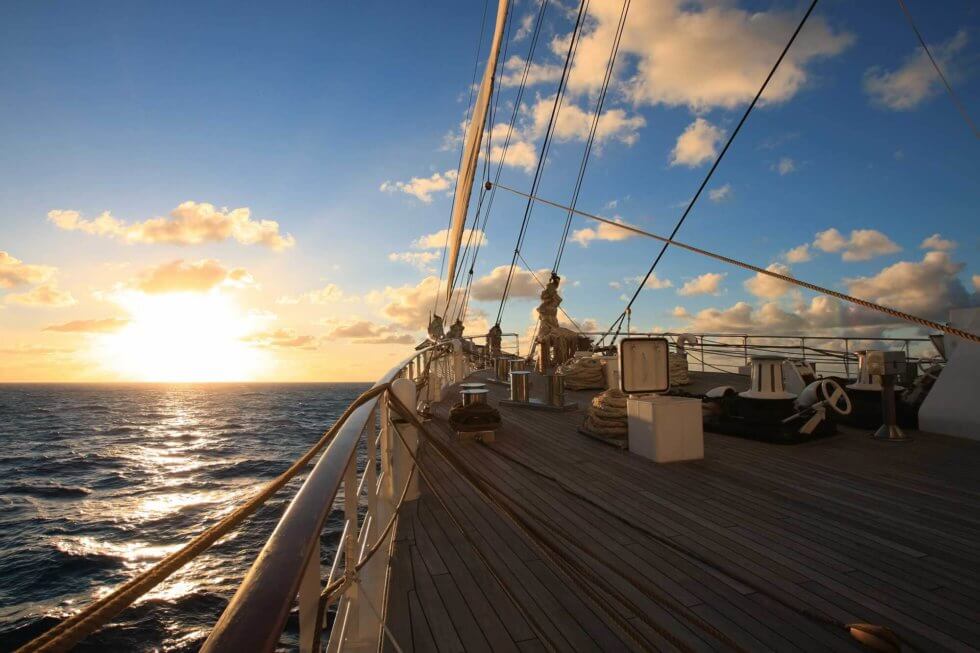
The course of Columbus from the Old to the New World is the ultimate cruise experience and a dream come true for many sailing enthusiasts. At the end of November, the SEA CLOUDs choose the same course as the discoverer and sail across the Atlantic day and night under the ideal conditions of the trade winds.
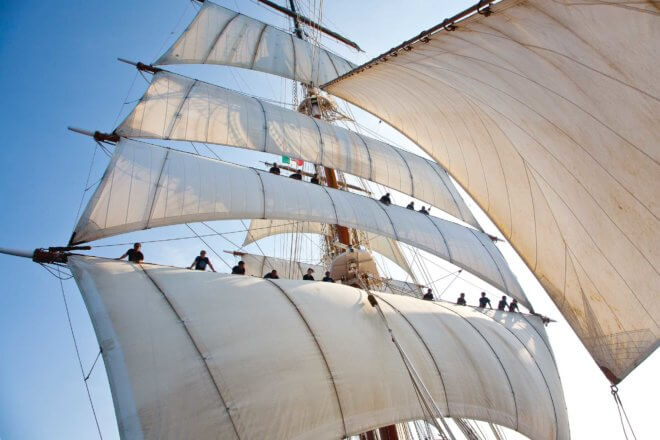
PERFECT SAILING CONDITIONS
With the trade wind across the Atlantic: At about 30° north or 30° south, the air masses have cooled down to such an extent that they sink again and return to the equator. As a constant, westerly wind, the trade wind, they then guide the SEA CLOUDs across the Atlantic with steady force.
New sailing record: The SEA CLOUD covered a total of 2,300 nautical miles (approx. 4,260 kilometers, 2,647 miles) on her transatlantic crossing in December 2019 from Santiago (Cape Verde) to Santo Domingo (Dom. Republic) under sails alone. From 15 days at sea, 333.3 hours (almost 14 days) were completely sailed through. A very special trip, where even the captain himself went into raptures, after the record of 85% of the SEA CLOUD II’s distance under sails was broken from the year before.
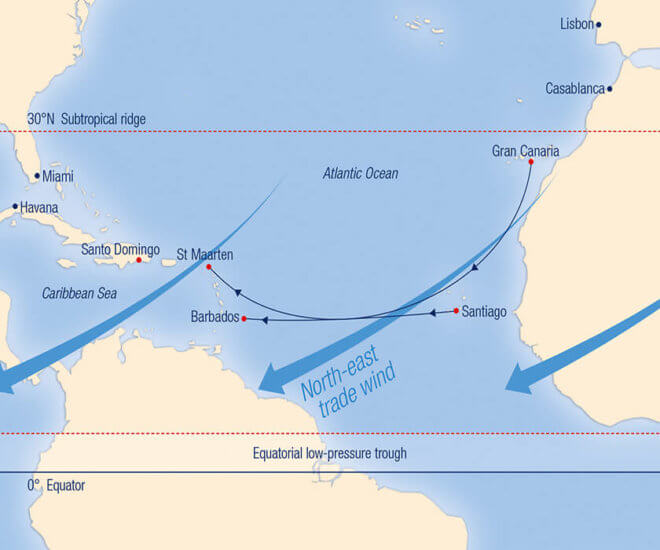
WHAT EXACTLY ARE THE TRADE WINDS?
When, close to the equator, the sun is almost vertical in the sky, it shines straight down heating the air above the ocean surface. Once warm, this air rises and moves towards the poles on both sides of the equator.
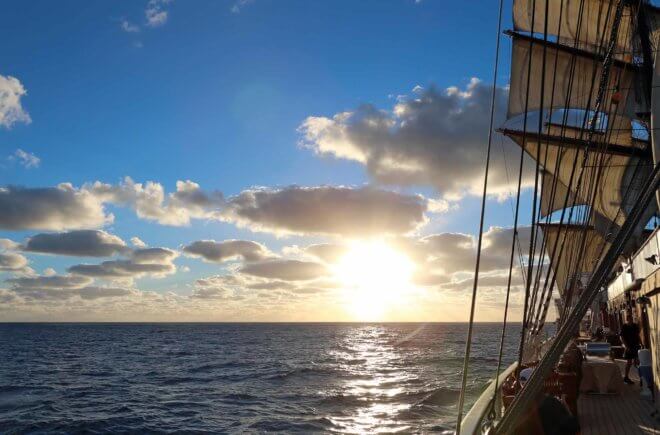
THE UNIQUE ATHMOSPHERE ON BOARD
It is so easy to strike up a conversation with people who share the same passion. On a Transatlantic crossing, you will find yourself among sailing fans. The intensive sailing experience soon creates close ties in this friendly, informal atmosphere. The captain, the officers and the deck crew are always happy to answer questions about the ship, course calculations or sailing manoeuvres.

TIME FOR THE OCEAN, TIME FOR YOURSELF
Escaping your daily routine for a whole fortnight, enjoying the ultimate sailing experience and true relaxation – the Transatlantic crossing is the perfect voyage to rest your mind. On the SEA CLOUD II and SEA CLOUD SPIRIT, you can further deepen your pampering program in the fitness room or during massages and spa treatments (at an additional charge).


IMAGES
VIDEO
COMMENTS
Transatlantic sailing record. Banque Populaire V, current record holder. Since the five-week voyage of Christopher Columbus in 1492, quickly and safely crossing the Atlantic Ocean between Europe and the Americas has always been an important issue. Today, the route has become a classic one among skippers.
Comanche, the 100ft maxi racing yacht built to break records for Jim Clark and Kristy Hinze-Clark, has set an astonishingly fast new transatlantic record. In making the crossing in just 5 days, 14 ...
Coming into the English Channel in low, grey cloud and fog, Comanche 's crew were well ahead of the record. The ideal had been to take as much as a day off Mari Cha 's record, but when they ...
The current record is 41.284 knots (76.5 km/ per hour) average over two days, 20 hours and 9 minutes. The Hales Trophy is a heavily gilded ornate trophy over one metre in height and is on display ...
The Transatlantic speed record comes 12 months after Comanche set a new 24-hour distance record for monohulls. The record was broken during the 2015 Transatlantic Race after Comanche covered 618.01 nautical miles in 24 hours. Her average speed was recorded as 25.75 knots, on the cusp of some strong southwesterly winds in the North Atlantic.
(July 28, 2016) - Comanche, the 100 foot racing yacht owned by Jim Clark and Kristy Hinze-Clark, has successfully set a new monohull transatlantic record of 5 days, 14 hours, 21 minutes 25 seconds.
High definition video of Jim Clark and Kristy Hinze-Clark's supermaxi, Comanche setting a new, provisional world record for crossing the Atlantic for a monohull, in a manually powered sailing vessel of 5 days, 14 hours, 21 minutes 25 seconds. The video was recorded on and off the boat as she crossed the virtual finish line off the Lizard, southern England.
The 30.48m (100ft) VPLP Design/Verdier Maxi Comanche, skippered by Mitch Booth, has taken Monohull Line Honours in the 2022 RORC Transatlantic Race, winning the magnificent IMA Trophy. Comanche has set a new race record for the 3,000nm race from Lanzarote to Grenada of 7 days 22 hours 1 minute 4 seconds. Comanche's new Monohull Race Record has ...
British solo sailor Alex Thomson smashed the single-handed monohull trans-Atlantic record by more than 24 hours crossing the finish line July 26 at Lizard Point, off Falmouth in Cornwall, England, reports Soundings Trade Only. The 38-year-old crossed the line at 18:17 British Standard Time, setting the new time at 8 days, 22 hours, 8 minutes.
Royal Caribbean's Symphony of the Seas has set a new world record during its most recent transatlantic crossing. The ship has become the vessel to cross the Atlantic Ocean with the most guests and crew onboard. The massive ship started its record-breaking repositioning voyage on March 9, sailing at almost 100% occupancy.
In pursuit of trans-Atlantic record. Published on July 27th, 2023. New York, NY (July 27, 2023) - The maxi trimaran Sails of Change set out today in an attempt to break the trans-Atlantic record ...
Transatlantic Record Current record holder: Banque Populaire V, completed in three days 15 hours, 25 minutes, 48 seconds. Crossing the Atlantic quickly and safely has been a priority ever since explorers and colonizers began doing it over five centuries ago, and this legacy makes it one of the most prestigious sailing records of them all.
Transatlantic Crossing in Record Time. Here are the records for the fastest crossings of the Atlantic in a Sailboat. Crewed: Time: Boat Name: Hull: Year: Speed: 5d 14h 21min 25s : Comanche : Monohull: 2016: 21.44 knots (39.71 km/h) 3d 15h 25min 48s: Banque Populaire V : Trimaran: 2009: 32.94 knots (61.00 km/h)
Andrew Bedwell's 3'3" sailboat is tiny, especially for the Atlantic. But the Englishman plans to break the record for smallest boat crossing.
The current record for the crossing is two days, ten hours and 54 minutes, achieved by the Aga Khan's 220 foot long, jet engine powered boat Destriero in 1992. The jet-powered Destriero set a very ...
The five-strong crew completed the entire crossing in 7 days, 13 hours and 15 minutes, one of the fastest sailboat crossings of the world's second largest ocean they've experienced. Between them they have 56 transatlantics under their belts. "That was my sixteenth transatlantic crossing and the fastest one to date," commented Enright.
The smallest boat to cross the Atlantic was 5ft 4inches, sailed by American sailor, Hugo Vihlen in 1993. Many have tried but failed to break this record. But sailor Andrew Bedwell believes he can regain this most unusual of crowns for Britain. The 48-year-old solo skipper is no stranger to sailing in small craft or pushing the limits.
Black Projects Division. The SR-71's Record-Breaking Transatlantic Crossing. September 1st, 1974, was pretty much just another average day for New Yorkers. It didn't look like either the Yankees or the Mets would make the playoffs (neither did), and the temperature was in the high-70s (Fahrenheit) at the tail end of yet another long, hot ...
Transatlantic crossings are passages of passengers and cargo across the Atlantic Ocean between Europe or Africa and the Americas. ... transatlantic crossings were undertaken in sailing ships, ... Guinness Book of World Records has awarded world records to vessels of various classes such as luxury liners, sail boats, and rowing boats. Because of ...
One of the last liners, the United States (mainly made of aluminum), held the transatlantic crossing speed record of 3.5 days in 1952. By the 1960s, air transportation had overtaken the supremacy of liners for transatlantic crossings, and reference time became hours instead of days. Liner services disappeared, and the surviving ships became the ...
In that sailing, the vessel carried 15,740 troops and 943 crew (Total = 16,683). Symphony's new record for the most "pleasure cruisers" ever to transit the Atlantic is impressive, but clearly, it is well short of the record held by the Queen in terms of 'people' on board for a crossing.
New sailing record: The SEA CLOUD covered a total of 2,300 nautical miles (approx. 4,260 kilometers, 2,647 miles) on her transatlantic crossing in December 2019 from Santiago (Cape Verde) to Santo Domingo (Dom. Republic) under sails alone. From 15 days at sea, 333.3 hours (almost 14 days) were completely sailed through. ...
In July 1943, the Cunard Line ocean liner Queen Mary set the record for a crossing of the Atlantic carrying 16,683 crew members and troops on a single passage. Photo Credit: Khairil Azhar Junos ...
Carrying a total of 7,604 people on board -- including 5,350 passengers and 2,224 crew members -- Symphony of the Seas has set a new record for an Atlantic crossing. The Royal Caribbean ship ...